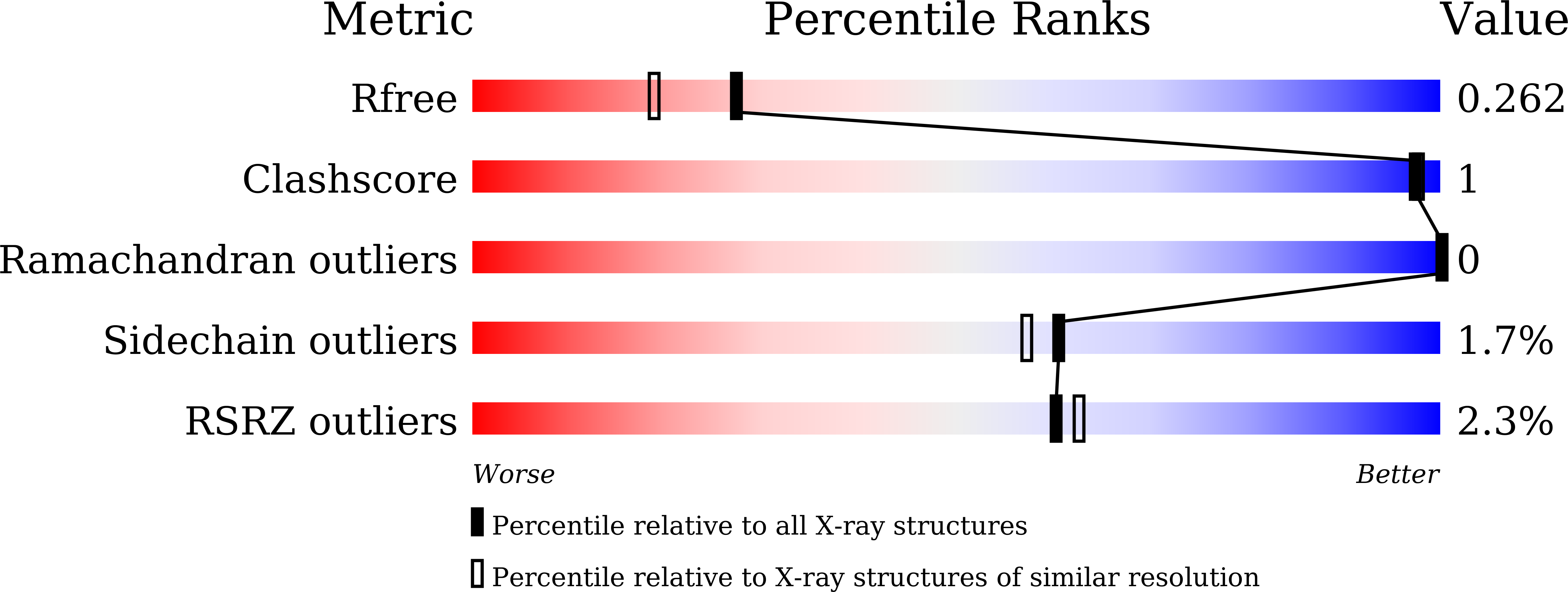Structure-Guided Design of Halofuginone Derivatives as ATP-Aided Inhibitors Against Bacterial Prolyl-tRNA Synthetase.
Cheng, B., Cai, Z., Luo, Z., Luo, S., Luo, Z., Cheng, Y., Yu, Y., Guo, J., Ju, Y., Gu, Q., Xu, J., Jiang, X., Li, G., Zhou, H.(2022) J Med Chem 65: 15840-15855
- PubMed: 36394909
- DOI: https://doi.org/10.1021/acs.jmedchem.2c01496
- Primary Citation of Related Structures:
5ZNJ, 5ZNK - PubMed Abstract:
Aminoacyl-tRNA synthetases (aaRSs) are promising antimicrobial targets due to their essential roles in protein translation, and expanding their inhibitory mechanisms will provide new opportunities for drug discovery. We report here that halofuginone (HF), an herb-derived medicine, moderately inhibits prolyl-tRNA synthetases (ProRSs) from various pathogenic bacteria. A cocrystal structure of Staphylococcus aureus ProRS ( Sa ProRS) with HF and an ATP analog was determined, which guided the design of new HF analogs. Compound 3 potently inhibited Sa ProRS at IC 50 = 0.18 μM and K d = 30.3 nM and showed antibacterial activities with an MIC of 1-4 μg/mL in vitro . The bacterial drug resistance to 3 only developed at a rate similar to or slower than those of clinically used antibiotics in vitro . Our study indicates that the scaffold and ATP-aided inhibitory mechanism of HF could apply to bacterial ProRS and also provides a chemical validation for using bacterial ProRS as an antibacterial target.
Organizational Affiliation:
Guangdong Provincial Key Laboratory of Chiral Molecule and Drug Discovery, School of Pharmaceutical Sciences, Sun Yat-sen University, Guangzhou, Guangdong 510006, China.


















